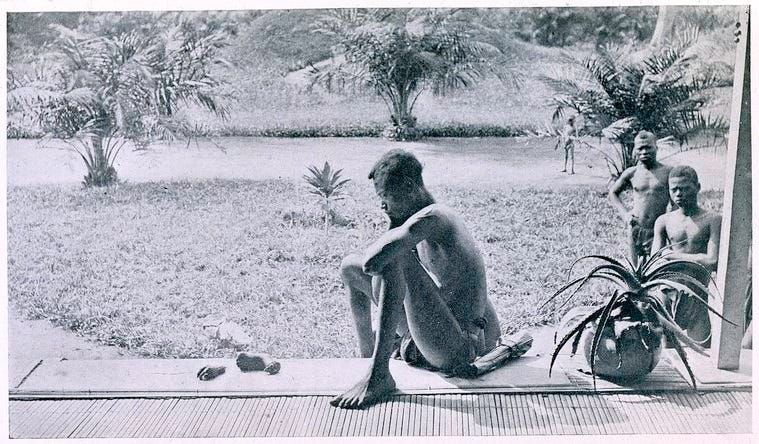Frankenstein. The Story Behind the Story.
Malorie Blackman, The Congo, On This Day, Caesar & Martin Scorsese.
BOC#047
5 MINUTE MUNCH
TITLE PIECE: MARY SHELLEY & THE ORIGINS OF FRANKENSTEIN
With an all new Frankenstein movie trending on Netflix this week, what do we really know about its creator? Not Victor the mad scientist, rather, Mary Shelley, author and creator of both Victor Frankenstein and the conglomerate monstrosity we’ve all come to know and…love?
The story behind the story is almost as bizarre as the fiction itself. Caught between life, death and tragedy in the unforgiving clutches of 18th England, a few dissenting women confronted the hardships of daily life, while weathering the tribulations of the many social disparities that defined their place in the world.
Frankenstein author Mary Shelley was the daughter of the famed women’s rights campaigner Mary Wollstonecraft, often considered the mother of feminism. Wollstonecraft was born on April 27th 1759, one of seven siblings born to poor Irish parents. She found herself moving around England and Ireland frequently owing to her father’s failed financial ventures.
Her father, Edward Wollstonecraft, was an alcoholic who is said to have once hung the family dog in a fit of rage, and is accused of raping his wife, Elizabeth Dickson, an act whose criminality wouldn’t be detailed until 20031. It’s little wonder Mary Wollstonecraft spent her days thinking and writing about the “tyranny of men.”
Her political writings were published by radical London based publisher Joseph Johnson, a dissenter described by Daisy Hay as “a bookseller and a maker of books in an age when books appeared to have the potential to change the world.”2
Wollstonecraft rose to fame following a string of articles in Johnson’s literary magazine the Analytical Review, and most notably, following her 1790 title, A Vindication of the Rights of Men. This would be followed by her most famous book, A Vindication of the Rights of Woman in 1792. Mary’s interest in the French Revolution and its implications for women’s rights was reflected in her writing, and saw her travel to Paris where she met American businessman and diplomat Gilbert Imlay. While the couple weren’t married, Mary gave birth to Fanny Imlay, and would soon find herself single and back in England. Somewhat distraught, she would attempt to commit suicide twice.
In 1776, however, Mary met William Godwin at a meeting arranged by her publisher and famed friend and author Thomas Paine. Having fallen pregnant once more, and in spite of vowing never to marry when she was just fifteen, Mary and William Godwin tied the knot in 1797, though they kept their residences separate. Their daughter, Mary Godwin, would later go on to marry the great English Romantic poet Percy Bysshe Shelley. Mary Godwin Shelley, or Mary Shelley for short, was thus born.
Wollstonecraft would die from an infection 11 days after giving birth, however; a parcel of guilt that would haunt Shelley for the rest of her days. Shelley herself would later lose a baby daughter born out of wedlock. Some critics have suggested that this maternal guilt helped shape the story of Frankenstein. Whatever the case, having had writers for parents, and a poet for a husband, Shelley was destined to join the ranks of the literary greats.
Shelley penned her gothic novel Frankenstein in 1816 at the fruitful age of eighteen, a story born of a competition between herself, Lord Byron and Percy Shelley while on a trip to Geneva, the same trip that produced The Vampyre, a precursor to Dracula as imagined by Lord Byron’s companion John Polidori.
The storytelling competition was suggested by Lord Byron as an activity by which to occupy the sedentary companions as they faced a summer of disastrous weather. The 1815 eruption of Mount Tambora in Indonesia bore what became known as the year without summer, seeing the group’s planned activities called-off.
Frankenstein wouldn’t be published until 1818 when Mary was twenty. The novel was revised thirteen years later in an attempt to make the story more acceptable to a wider audience. One of the most notable revisions included the removal of Victor’s incesteral relationship with Elizabeth who, in the revised edition, would become the family’s adopted sister.
While Mary was off galavanting around Europe with Percy, Percy’s first wife, twenty-one year old Harriet (to whom he was still married) drowned herself in the Serpentine at Hyde Park, yet another burden for Mary to digest. As if that wasn’t traumatic enough, Mary’s half sister, Fanny Imlay who we met earlier, also committed suicide. It is thought she, too, was in love with Percy.
Percy Shelley would die in a shipwreck in 1822, leaving his only surviving son with Mary fatherless. Mary Shelley’s days ended with panic attacks and psychosomatic illness before dying from paralysis in her sleep in 1851, often attributed to a brain tumor. She was laid to rest in Bournemouth on the English southern coast.
Frankenstein was only the tip of a disconcerting iceberg; a horror that reflected the traumas of Mary’s own life. An extension, one might argue, of the realities that permeated the very fabric of her world. Her life was a canvas of trauma, hardship and loss; a stark resemblance to the life of the beast she created decades earlier.
ON THIS DAY: 24th NOVEMBER
On this day in 1991, Freddie Mercury died of AIDS at the young age of 45. He’d announced his diagnosis one day prior.
Lee Harvey Oswald, the assumed killer of President J.F. Kennedy, was shot and killed while being transferred by police. His Killer was named as Jack Leon Ruby (born Jacob Leon Rubenstein).
Charles Darwin’s “On the Origin of Species by Means of Natural Selection, or the Preservation of Favoured Races in the Struggle for Life” was published today in 1859. It would go on to revolutionise the way we think about biodiversity and speciation on Earth. While he was the first to publish the theory, the idea was simultaneously thought up by Alfred Russel Wallace.
The Dutch explorer Abel Janszoon Tasman sighted the west coast of Tasmania on this day in 1642, he originally named it Van Diemen’s Land, it was later changed to Tasmania in his honor.
BOOK PASSAGE OF THE WEEK
“Just remember, Callum when you’re floating up and up in your bubble, that bubbles have a habit of bursting. The higher you climb, the further you have to fall.”
― Malorie Blackman, Noughts & Crosses.
PHOTO OF THE WEEK
Photographed by Mr. John H. Harris in May, 1904. A father stares at the decapitated hand and foot of his five year old daughter — all that remained of a cannibal feast by armed rubber sentries under the regime of Belgian King Leopold. Such was the penalty for missed rubber quotas.
DID YOU KNOW?
It is thought that the name Caesar meant ‘hairy,’ coming from the Latin word caesaries, meaning “head of hair.” The sobriquet was used in jest to mock Julius Caesar on account of his baldness. The nickname went on to become a term of majesty in the form of Kaiser, Tsar, and Kayser-i Rum (a title of the Ottoman sultans).
CONSIDERATION OF THE WEEK
“Do we exist without our memory?”
― Martin Scorsese
Scorsese, director of Taxi Driver, Wolf of Wall Street, Shutter Island, and Goodfellas turned 82 this month.
MISSED LAST WEEK? READ: THE TRUTH ABOUT NAT TURNER.
A precedent was set in 1991, but it wouldn’t be detailed until the Sexual Offences Act 2003.
Hay, Daisy (2022). Dinner with Joseph Johnson: Books and Friendship in a Revolutionary Age.













Thanks Omar! Fascinating and tragic life!